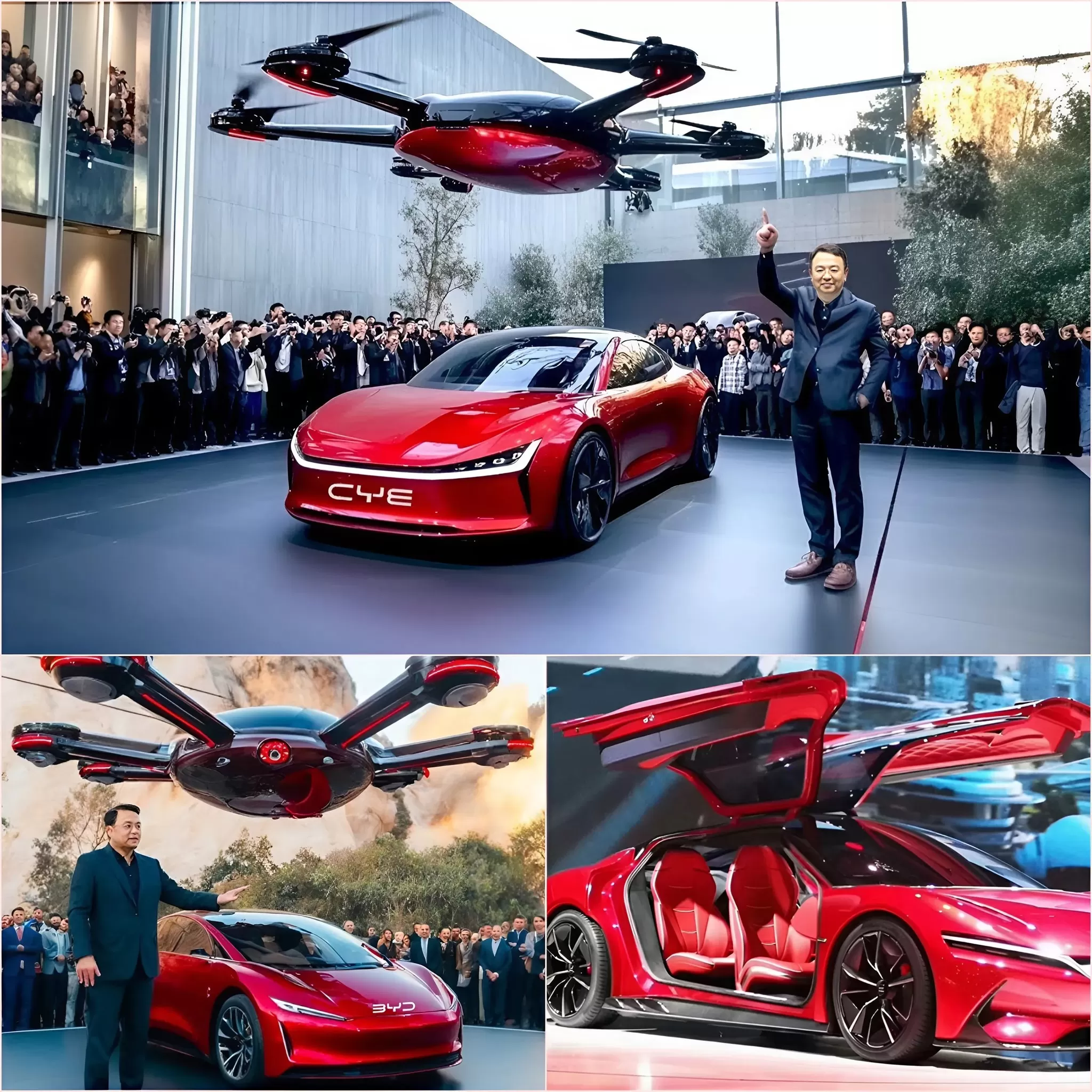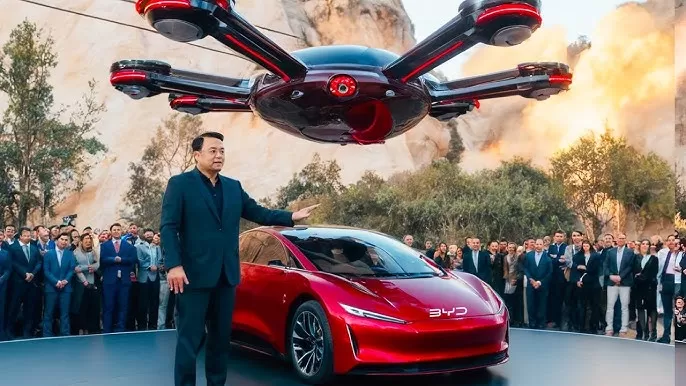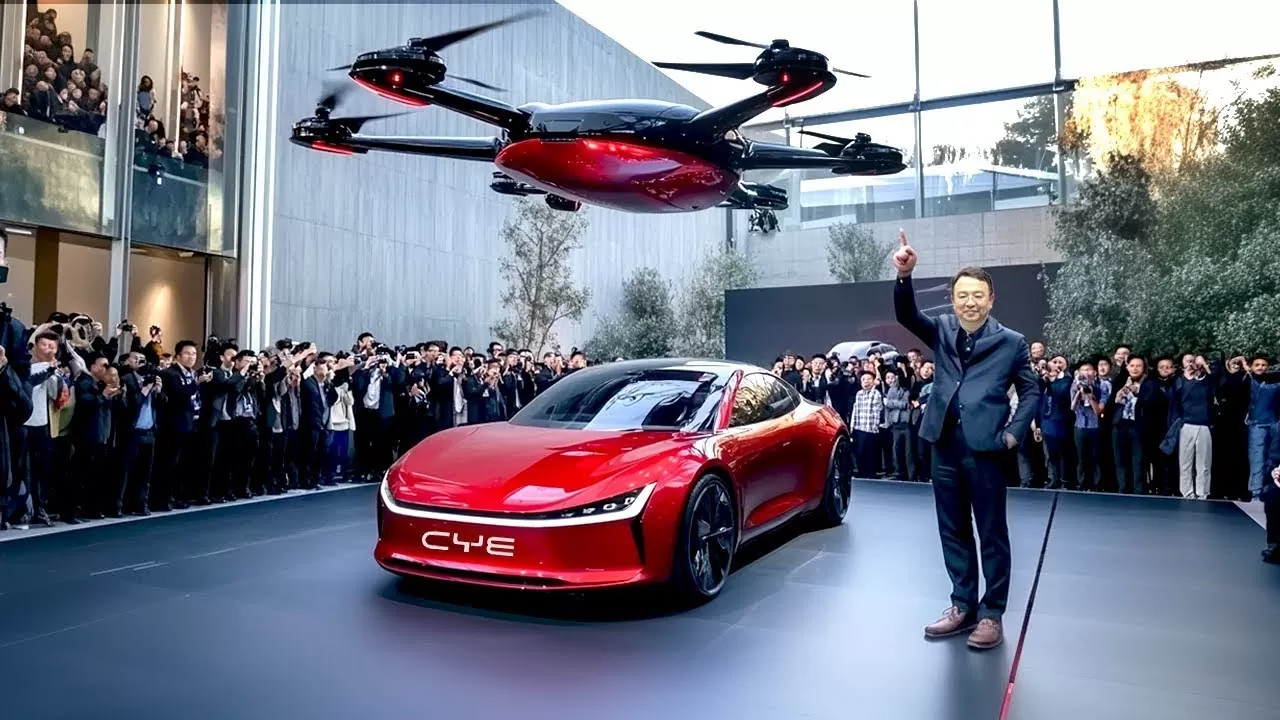
BYD Unveils the World’s First $7,000 Flying Car – A Game Changer for Urban Mobility
In a groundbreaking move that is set to revolutionize both the automotive and aviation industries, BYD’s CEO Wang Chuanfu has officially introduced the world’s first low-cost flying car, priced at an astonishing $7,000. This innovative vehicle could reshape urban transportation, providing an affordable alternative to traditional cars and challenging the dominance of industry giants like Tesla, Airbus, and other Silicon Valley startups.
BYD’s Leap into the Future of Transportation
As China’s leading electric vehicle (EV) and renewable energy company, BYD has already transformed the global EV market. Now, the company is taking electrification and smart mobility a step further by venturing into flying car technology. The unveiling of the first mass-produced, low-cost flying car marks a significant milestone in urban mobility, potentially addressing issues like traffic congestion, pollution, and accessibility.

BYD Flying Car: Technical Specifications & Features
This next-generation flying vehicle is a fusion of drone technology and automotive innovation, featuring:
🚀 Unbeatable Price – At just $7,000, this is the most affordable flying car to date, making personal air travel a reality for more people.
⚡ Electric Propulsion System – Powered by an efficient electric drive, ensuring lower carbon emissions and reduced operational costs.
🛫 VTOL (Vertical Take-Off and Landing) Technology – Can take off and land in small, confined spaces, eliminating the need for runways.
🔋 Impressive Flight Autonomy – A single battery charge allows up to 60 minutes of flight time with speeds reaching 120 km/h (75 mph).
🤖 Autonomous Flight & Safety Features – Equipped with autopilot functions, obstacle detection, and collision avoidance systems to enhance safety.
With these features, BYD’s flying car could redefine how people commute, offering a cleaner, faster, and more efficient transportation alternative.

A Disruptor in Urban Mobility & Transportation
BYD’s affordable flying car has the potential to disrupt traditional urban transportation models by:
- Reducing city traffic congestion, thanks to air travel routes.
- Lowering pollution levels, as it operates with zero-emission electric power.
- Creating new economic opportunities, from air taxis to on-demand flying transport services.
- Enhancing accessibility, making flying cars no longer a luxury, but an affordable reality for everyday commuters.
According to Wang Chuanfu, “Our mission is to make flying car technology accessible to everyone and reshape the future of transportation.”
How Does BYD Compare to Other Flying Car Manufacturers?
Until now, flying cars have been experimental prototypes developed by companies like Tesla, Airbus, and emerging tech startups. However, these models cost hundreds of thousands—or even millions—of dollars, making them impractical for mass adoption.
BYD’s strategy is different:
✅ Affordable Mass Production – Instead of targeting the ultra-rich, BYD aims for the mass market, ensuring a wider adoption of flying vehicles.
✅ Practical Design for Urban Use – Unlike some luxury flying car models, BYD’s vehicle is designed for everyday commutes and short-distance flights.
✅ Strong Government Support – China is actively working on aviation regulations, potentially fast-tracking the integration of flying vehicles into daily life.
Regulatory Challenges & Global Expansion
Despite its ambitious vision, BYD’s flying car must overcome regulatory hurdles before it becomes a mainstream transportation option.
🌍 China – The Chinese government is already drafting new laws to facilitate the commercial use of personal flying vehicles.
🇺🇸 United States – The FAA (Federal Aviation Administration) is still developing guidelines for urban air mobility (UAM), which could take several years.
🇪🇺 Europe – The EASA (European Union Aviation Safety Agency) is expected to issue new regulations for flying cars in the near future.
As legal frameworks evolve, BYD’s flying car could gradually expand into international markets such as Asia, Europe, and Latin America.
Release Date & Market Availability
📅 Expected Launch: The first fleet of BYD flying cars is set to undergo testing in China by 2025.
🌎 Global Expansion: If successful, BYD plans a gradual rollout to other key markets in the following years.
The Future of Transportation Is in the Sky
BYD’s $7,000 flying car is not just an innovation—it’s a potential transportation revolution. While technical and regulatory challenges remain, the possibilities it offers mirror the impact of automobiles in the early 20th century.
🚀 The real question isn’t if flying cars will become common—it’s when.
🔮 And with BYD leading the charge, the future of urban travel might arrive sooner than we expect.



